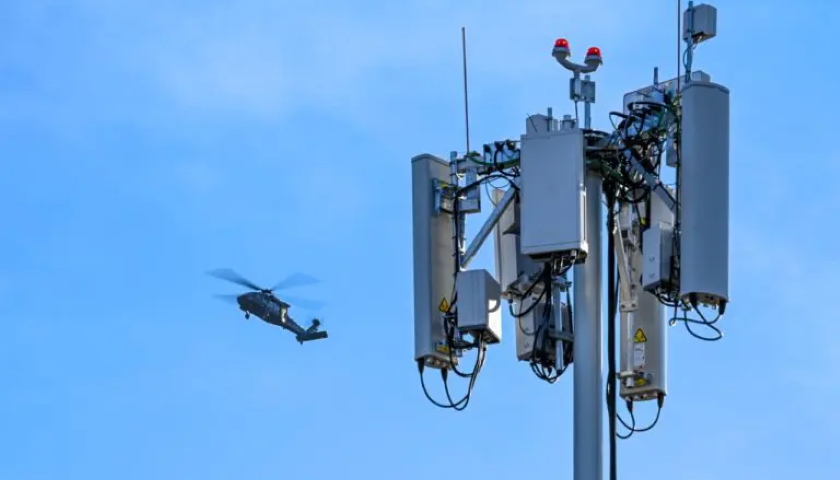With Phase 1 successfully completed, the initial Dynamic Spectrum Sharing testbed expands with Nokia’s Service Enablement Platform and RIC.
Nokia announced an extension of its previously announced partnership with the U.S. Department of Defense (DoD) to mitigate potential military radar interference with 5G networks. Hill Air Force Base is the location of the testing, near Ogden Utah. The DoD and Nokia kicked off the testing in late 2021 and Phase 1 of the project has been successfully completed, said Nokia.
The ultimate goal of the project is to make sure 5G networks and active radar systems used by the military can coexist in shared spectrum. Nokia’s partnership with the DoD is one of a dozen different relationships the DoD is managing in three different segments: 5G testbed, 5G applications, and 5G network enhancements. The 39-month program’s goal is to develop a variety of spectrum coexistence system (SCS) solutions.
“The project is part of a wider initiative by the Office of the Under Secretary of Defense Research and Engineering (OUSD(R&E)) to create its first tranche of 5G wireless testbeds,” said the company in a statement.
This next phase of the testing sees Nokia deploying its Service Enablement Platform, combining a RAN Intelligent Controller (RIC) and Multi-access Edge Computing (MEC) capabilities. The company said that the test system employs an O-RAN interface developed by the O-RAN Alliance to expose radar interference detection and mitigation capabilities.
At the time of the initial announcement, Deb Stanislawski, director of OUSD (R&E) 5G tranche prototyping and experimentation, said the experiments with Nokia and others were designed to rally the DoD and vendors to develop a collaborative 5G approach. She explained the problem thy were trying to solve.
“Electromagnetic spectrum is a highly scarce resource relative to demand and U.S. commercial operators lag in access to highly desired mid-band, or 3-4 GHz. We must figure out how to share this band if we are to unleash a new wave of network innovation and break the global dependency on compromised 5G networks sold by state-subsidized, antagonistic peer competitors,” she said.
The DoD testing is part of a long-term effort to avoid similar issues with military aircraft the Federal Aviation Administration (FAA) has been wrangling with on the civilian side. Verizon and AT&T delayed their initial 5G C-Band turn-up after the FAA and the aviation industry expressed concern that 5G C-band deployment may affect the accuracy of radio altimeters on civilian aircraft.
In late June, U.S. regulators, Communication Service Providers (CSPs) and aviation industry representatives agreed to a phased-in approach which will see aircraft most susceptible to possible problems refit mostly by the end of 2022. AT&T and Verizon will maintain voluntary mitigations while air carriers upgrade their fleets. Operators of aircraft with affected radio altimeters “must install filters or other enhancements as soon as possible,” with filters and replacement units for mainline commercial fleets expected to be available on a timeline such that the work could be “largely completed by July 2023.”
Source: rcrwireless.com





